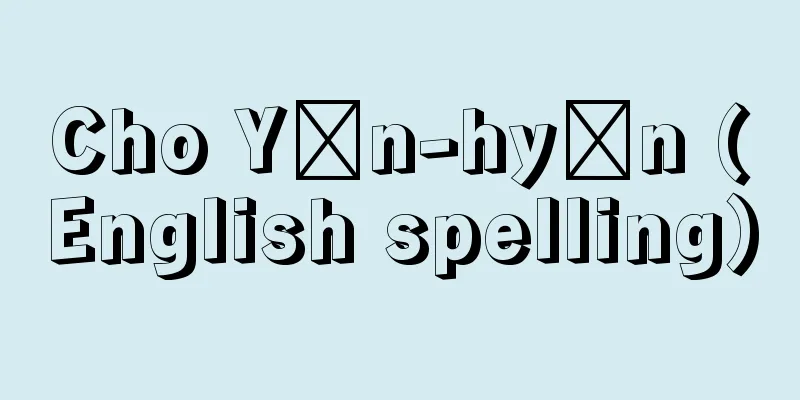Chichibu Incident

|
The Chichibu Kominto Uprising occurred in 1884 (Meiji 17). The mountain villages of Chichibu were unable to produce their own grains and so mainly supplemented this through the production of raw silk, but in 1883 and 1884 the global depression and Matsukata's deflation hit the commodity economy hard, and with local tax hikes and the costs of building schools and new roads, farmers were forced into dire straits. The supply and demand relationship in consumer credit also played a role, with loan sharks charging exorbitant interest rates and many indebted farmers going bankrupt or fleeing. In November 1883, a representative of the farmers petitioned the county office to persuade the loan sharks, but their petition was rejected. In 1884, Tashiro Eisuke also tried to join the Liberal Party, and in February, when Oi Kentaro came to Chichibu, about 20 middle-class farmers who were on the brink of ruin joined the party, and they became the core of the Konminto Party, and at the same time, they reinterpreted the Liberal Party Covenant in a more peasant way. In August, meetings of indebted farmers were held in various places, and the number of heads of debt, which started out at about 30, soon grew to 100. In September, the executives invited Tashiro Eisuke, and while the mobilization organizations in each village were gradually established, they still conducted petition campaigns and negotiations with loan sharks for the postponement of repayment of debts. In late October, the farmers, having run out of options, decided to revolt and created the Konminto Covenant, which included provisions such as providing relief to the poor, negotiating with moneylenders and destroying them if they did not agree, burning documents at the headman's office, and abolishing taxes and school fees. At the same time, Ooi Kentaro sent envoys to try to thwart the revolt, but the Konminto executives overcame the intentions of the Liberal Party and unanimously decided to revolt on November 1st. On October 31st, the village of Fuppu rose up in revolt first, attacking a moneylender company that night, and the following morning, fighting with police in Yoshida, and in the afternoon, farmers from the region gathered at Muku Shrine in Shimoyoshida (Chichibu City). They were armed with bamboo spears, swords, and guns. Here, the leaders announced a list of roles, organized the army under Prime Minister Eisuke Tashiro, Vice Prime Minister Orihei Kato, and Chief Accountant Denzo Inoue, and organized it into two battalions and village-specific platoons, and established strict military discipline. They attacked loan sharks from Yoshida and advanced to Ogano, and on the 2nd, they invaded Omiyago (Chichibu City) with 3,000 men, attacked loan sharks, and collected donations from wealthy people. They had wiped out the government power, but the prefecture requested the Minister of Interior to send in troops, and the garrison troops and military police were deployed on the 3rd, and a gun battle took place in Minano. However, by the afternoon of the 4th, the leaders had lost their fighting spirit, and although Tashiro and others had fled from the main camp in Minano, that night a force of nearly 500 men set out from Chichibu and engaged in combat with the garrison soldiers at Kanaya Village, Kodama County (Honjo City), resulting in over 10 deaths. Meanwhile, a force led by Kanpei Kikuchi entered Gunma, went up the Kanna River, and made a long journey into Nagano Prefecture, where, in the early hours of the 9th, they were defeated in combat with the garrison soldiers and police at Higashimanagashi in Minamisaku County, resulting in 14 deaths, and the remaining soldiers were attacked at the foot of Mt. Yatsugatake in the afternoon and disbanded. More than 6,400 people were accused of the incident in Chichibu alone, and participants came from Gunma and Nagano, resulting in seven people being executed for the crime of assassinating criminals. Of all the Konminto incidents, this was the largest in the history of the Freedom and People's Rights Movement. [Koji Inoue] "The Chichibu Incident by Koji Inoue (Chuko Shinsho)" [Reference] |Source: Shogakukan Encyclopedia Nipponica About Encyclopedia Nipponica Information | Legend |
|
1884年(明治17)に発生した秩父困民(こんみん)党の蜂起(ほうき)事件。秩父の山村では穀物自給が不可能で、主として生糸生産によってこれを補完していたが、1883、84年、世界不況と松方財政のデフレは商品経済を直撃したうえ、地方税の引上げ、学校・新道の開設費を伴い、農民の生活は窮迫に追い込まれた。消費金融の需給関係も働き、高利貸営業者の利子率は法外なものとなり、負債農民の破産や逃亡も続出した。1883年11月、農民の総代は郡役所に高利貸説諭の請願をしたが、受け付けられなかった。1884年になると、田代栄助(たしろえいすけ)も自由党に加入しようとし、2月、大井憲太郎の来秩を機に、没落に瀕(ひん)する中農層が20人ほど入党し、これが困民党結成の中核となると同時に、自由党盟約を農民的に読み替えた。8月になると各地で負債農民の集会が行われ、惣代(そうだい)は初めは30人ぐらいであったが、やがて100人となり、9月になると幹部は田代栄助を招請し、各村の動員組織はしだいに整っていく一方、なお請願運動や高利貸に対する返済延期の折衝を行った。 10月下旬、万策尽きた農民は蜂起を決定し、困民党盟約を作成、これは困民救済、金貸しと交渉し承諾のないときは打毀(うちこわし)、戸長役場の書類焼却、諸税・学校費の廃止などを内容とした。同じころ大井憲太郎は蜂起阻止の説得使を派遣したが、困民党幹部は自由党の意図を乗り越えて、総意をもって11月1日の蜂起を決定した。10月31日まず風布(ふっぷ)村が蜂起し、その夜金貸し会社を襲撃し、翌1日午前中、吉田において警官隊と交戦し、午後この地方の農民を中心に下吉田(秩父市)の椋(むく)神社に結集した。竹槍(たけやり)、刀、銃が武器であった。ここで幹部は役割表を発表し、総理田代栄助、副総理加藤織平(おりへい)、会計長井上伝蔵(でんぞう)、以下二大隊、各村別小隊という編成をとり、厳しい軍律を定めた。吉田から高利貸に攻撃をかけつつ小鹿野(おがの)に進み、2日3000人をもって大宮郷(おおみやごう)(秩父市)に侵入、高利貸を襲い、富豪から募金した。官権力を一掃したが、県は内務卿(きょう)に軍隊派遣を要請し、鎮台兵、憲兵は3日には配置につき、皆野(みなの)において銃撃戦を行った。しかし4日午後に幹部は戦意を失い、田代をはじめ皆野の本陣から逃走したにかかわらず、その夜500人に近い一隊は秩父から出撃して児玉郡金屋村(本庄(ほんじょう)市)で鎮台兵と交戦して10人に余る死者を出した。一方、菊池貫平(かんぺい)の一隊は群馬に入り神流(かんな)川をさかのぼり、長駆長野県に侵入し、数百名の農民を加えて9日未明、南佐久郡の東馬流(ひがしまながし)において鎮台兵、警官隊と交戦して撃破され、14人の戦死者を出し、敗残の兵は午後八(やつ)ヶ岳山麓(さんろく)で攻撃を受けて解体した。事件の被告は秩父のみで6400人を超え、参加者は群馬、長野に及び、兇徒聚衆(きょうとしゅうしゅう)罪による死刑は7人を数えた。困民党の事件中、自由民権運動史に刻まれる最大のものであった。 [井上幸治] 『井上幸治著『秩父事件』(中公新書)』 [参照項目] |出典 小学館 日本大百科全書(ニッポニカ)日本大百科全書(ニッポニカ)について 情報 | 凡例 |
Recommend
Honda Yoichi - Honda Yoichi
Year of death: March 26, 1912 (Meiji 45) Year of b...
Baltrušaitis
Lithuanian-born French art historian. His father (...
Japanese Popular Party - Nihon Taishuto
A moderate proletarian party in the early Showa p...
Mamiyairocho (Eight-colored Eyebrowed Bird) - Mamiyairocho (English spelling) asity
A general term for birds of the passerine order Ph...
Kejawén (English spelling)
Java is an abstract noun formed by adding the pref...
stupor
... Coma, stupor, oblivion, somnolence, etc., ind...
cohesive energy density
…In such cases, the ease of interfacial bonding i...
Kyokuroku -
A type of chair used primarily by Buddhist monks....
Arc sine function
...There are an infinite number of x 's for w...
Aware - Pity
...Instruments used include the shakubyoshi playe...
Mist clouds
…A tuft of clouds is a rounded, hump-shaped tuft....
Okazaki Plain - Okazaki Heiya
A plain that spreads across the central part of A...
Charnock, J.
…But for Europeans who had traveled north along t...
Lamé, G. (English spelling) LameG
… In an isotropic elastic body, Young's modul...
Gallup poll
This is a public opinion poll conducted by the Ame...









